Catfish Hunter: Yankees’ foremost, MLB’s first big-money star
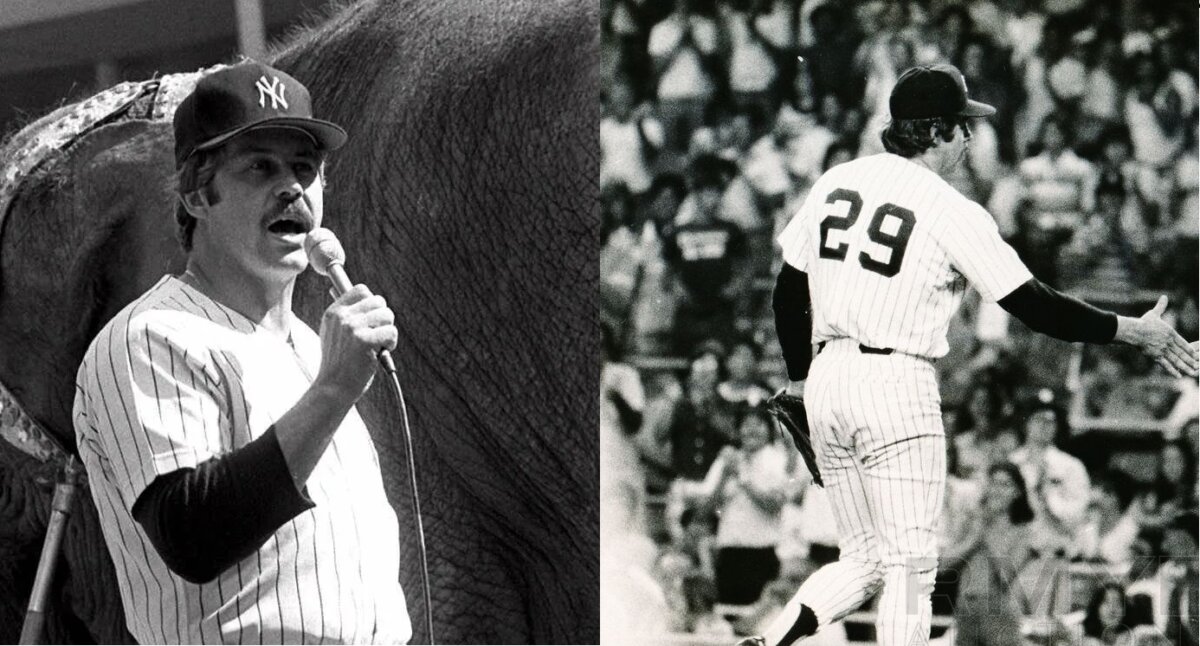
-
 John Allen
John Allen
- November 28, 2023
- 5:26 am
- 2 Comments
Table of Contents
| Position | Pitcher |
| Active years | 1965-1979 |
| Teams (years) | Kansas City / Oakland Athletics (1965–1974) New York Yankees (1975–1979) |
| Draft | Athletics, 1963 |
| Debut | May 13, 1965 vs. Chicago White Sox |
| Last game | September 17, 1979 vs. Cleveland Indians |
| Date of Birth | April 8, 1946 |
| Native place | Hertford, North Carolina, U.S. |
| Batted | Right |
| Threw | Right |
| All-Star | ×8 (1966, 1967, 1970, 1972–1976) |
| World Champions | ×5 (1972–1974, 1977, 1978) |
| AL Cy Young | 1974 |
| Shirt retired | 29 |
| Hall of Fame year | 1987 (BBWAA on 315/413 ballots) |
| MLB Awards | AL Cy Young Award (1974) 2× MLB wins leader (1974, 1975) |
| Legacy | AL ERA leader (1974) Athletics Hall of Fame |
| Nickname | Jim |
The Bio
During the 1974 offseason, 23 out of 24 MLB teams vied for the services of a remarkable pitcher and he is none other than Catfish Hunter. When he signed with the New York Yankees in December 1974, the contract made him the highest-paid player in baseball. Catfish Hunter immediately justified his worth by winning 23 games in the first year of his new contract and contributing to three consecutive pennant-winning seasons from 1976 to 1978.
James Augustus Hunter was a multifaceted individual. To most of the world, he was known as Catfish Hunter, the right-handed ace who excelled in big games and big-money situations. He anchored an Oakland A’s pitching staff that secured three consecutive World Series titles from 1972 to 1974. Catfish Hunter made history in May 1968 by pitching the American League’s first perfect game in 46 years. He achieved the remarkable feat of winning 20 or more games for five consecutive seasons and was honored with the American League’s Cy Young Award in 1974.
Catfish Hunter’s career was marked by success, whether he was playing for championship teams in Oakland or New York. He became the first pitcher since 1915 to reach 200 wins by the age of 31. Unfortunately, persistent arm problems led to his retirement at the age of 33 following the 1979 season. Despite his early retirement, he was inducted into the Baseball Hall of Fame in 1987. Tragically, he was diagnosed with amyotrophic lateral sclerosis (ALS), commonly known as Lou Gehrig’s disease, in his early 50s and passed away about a year after his diagnosis. Catfish Hunter’s legacy lives on in various popular culture references, including the mention of his name in the Bob Dylan song “Catfish.”
Despite retiring at the relatively young age of 33, Catfish Hunter’s illustrious career included 224 wins and an impressive tally of five World Series championships. He is often recognized as baseball’s inaugural big-money free agent. Those who knew the pitcher best often described him using terms like “artist,” “control,” and “competitive” when discussing his prowess and career. On the other hand, those who were closest to Jimmy, his personal side, were more likely to employ words such as “humble,” “modest,” “low key,” and “down to earth.” Hunter, a true country boy, excelled on baseball’s grandest stages without ever losing touch with his roots or the core of his identity as a person.
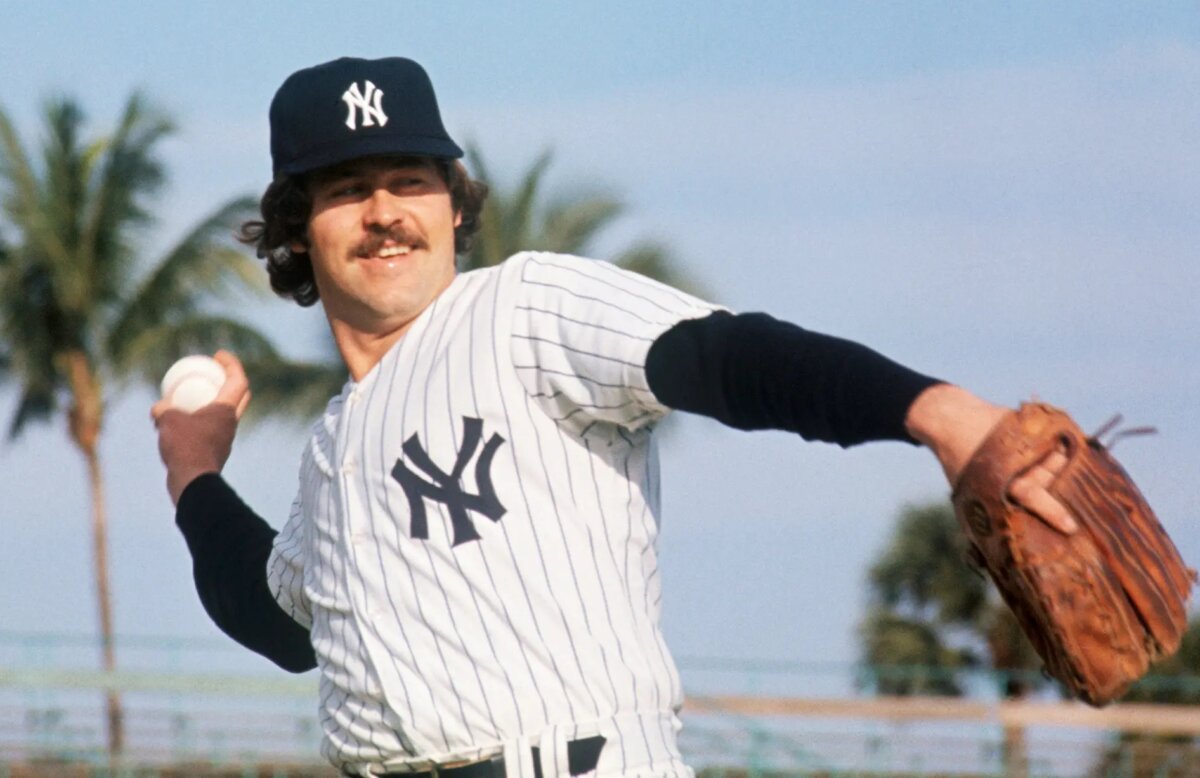
Early life and career of Hunter
James Augustus Hunter, famously known as “Catfish,” was born on April 8, 1946, in the town of Hertford, located in Perquimans County, North Carolina. He was the youngest child of Abbott and Millie Hunter and had a childhood filled with sports and outdoor adventures in the scenic landscapes of North Carolina. Catfish Hunter attended Perquimans High School, where he actively participated in varsity football and baseball, showcasing his immense talent on the field. Major league baseball scouts recognized his potential and made their way to Hertford to witness the rising star’s skills.
Growing up, Catfish Hunter was the youngest of eight siblings living in a modest four-bedroom wooden home on a 30-acre property just a short distance from town. His father, Abbott, served as a tenant farmer and logging foreman, while his mother, Millie, was a homemaker. The Hunter parents instilled a strong work ethic and discipline in their children. Abbott, who had a deep appreciation for the outdoors, taught his kids the art of hunting and fishing at an early age. Jim, in particular, eagerly embraced these lessons and retained his passion for the outdoors throughout his life.
As a young boy, Catfish Hunter learned the game of baseball by playing with his brothers. Although they had responsibilities such as chores and fieldwork, time was always set aside for baseball. They would often embark on trips to Baltimore in Abbott’s 1959 Ford so that Jim could watch his favorite pitcher, Robin Roberts. When at home, they spent hours playing games in the backyard after a long day of work.
By the time he reached his teenage years, Catfish Hunter had established a reputation as a well-rounded ballplayer, excelling both on the pitcher’s mound and at the plate. He developed a distinctive side-arm pitching style that would become his signature delivery to opposing batters.
In 1960, Catfish Hunter enrolled at Perquimans County High School, where he showcased his athletic prowess on the football field, track, and baseball diamond. On the baseball mound, he compiled an 8-5 record during his sophomore year. The following season, he delivered an extraordinary performance with a record of 13 wins against only one loss, leading his team to capture the state Class AA title. In an unforgettable 12-inning game, Catfish Hunter achieved an astounding feat by striking out 29 batters. Furthermore, Jim threw two remarkable no-hitters while playing American Legion baseball, attracting the attention of several major-league scouts.
However, in late November 1963, an unfortunate incident occurred during a Thanksgiving Day hunt with Jim and his brothers. A shotgun fired accidentally, and one of the shells struck Catfish Hunter on his foot, leading to the amputation of his little toe and approximately 50 pellets embedded in his right foot. Many teams lost interest in him after the accident. Still, a single team decided to take a chance and signed the promising pitcher in 1964.
Even though about 30 pellets remained in Catfish Hunter’s right foot, the injury did not seem to hinder his pitching abilities. The season commenced with an astonishing eight consecutive shutouts, including a perfect 5-0 game he pitched against the rival Elizabeth City on April 15, 1964, his second consecutive no-hitter. By the end of the season, he boasted an impressive record of 13 wins and 1 loss, including five no-hitters. Over his final two seasons at Perquimans County High School, Catfish Hunter recorded an outstanding 26-2 record. Any doubts about the effect of his injured foot had vanished, as scouts were once again captivated by his talents.
On June 8, 1964, Catfish Hunter inked a significant $75,000 contract with the Kansas City A’s. The team’s owner, Charles O. Finley, decided to embellish the pitcher’s persona. Finley crafted a captivating story, claiming that when Hunter was just six years old, he had run away from home but was later discovered fishing for catfish. This captivating tale led to the enduring nickname “Catfish” Hunter for the talented young baseball player. Shortly after signing with the Kansas City A’s, he underwent surgery at the Mayo Clinic in Rochester, Minnesota, where 16 more pellets and bone fragments were surgically removed from his right foot. Catfish Hunter healed well enough to partake in fall instructional baseball at Bradenton, Florida, under the supervision of camp coordinator Clyde Kluttz.
Catfish Hunter with the A’s
The nineteen-year-old fresh out of high school with a hefty $75,000 bonus had no significant track record to his name. Yet, Catfish Hunter, also a nineteen-year-old, was a highly-touted right-handed prodigy known for his scorching fastball. His nickname was tailor-made for memorable headlines. Expectations were sky-high, despite the fact that he had not pitched since his visit to the Mayo Clinic. His debut in the Major Leagues came on May 13, 1965, with an impressive two scoreless innings of relief work against the White Sox. Catfish Hunter’s first start against the Tigers in Detroit, however, resulted in four earned runs in just two innings of play. He secured his first big-league victory in his sixth start on July 27 in Boston, where he conceded five earned runs in five innings, contributing to the Athletics’ 10-8 victory.
By the conclusion of the 1965 season, Catfish Hunter held a record of 8-8, a 4.26 ERA, and 82 strikeouts in 133 innings pitched. He garnered attention for his competitive spirit and maturity that defied his nineteen years though his team was mediocore.
His high-school sweetheart, Helen, became his wife, and they exchanged vows on October 9, 1966.
In the subsequent seasons, Catfish Hunter’s skills continued to evolve. Although he did not rely on an overpowering fastball, the pitcher excelled primarily due to his precision control and his willingness to challenge batters with strikes. In 1967, Jim achieved double-digit wins for the first time, amassing 13 victories while striking out an impressive 196 batters, the highest single-season total he reached throughout his career.
Catfish Hunter in Oakland
The 1968 season marked a significant change for the A’s as they relocated from Kansas City to Oakland, achieving a winning record with 82 victories, their first time finishing over .500 since 1952. The highlight of the season was the perfect game pitched by 22-year-old Catfish Hunter against the Minnesota Twins on May 8 in Oakland. He demonstrated his prowess by striking out 11 batters and contributing offensively with three hits, driving in three runs in the 4-0 victory. While the team ended up in sixth place, their trajectory was promising with the development of a core of young talents, including Hunter, Reggie Jackson, Blue Moon Odom, and Sal Bando.
In 1971, Catfish Hunter delivered his best personal performance by winning 21 games, leading Oakland to 101 wins and clinching the American League West title. Unfortunately, their postseason journey was cut short as they were swept in three games by the Baltimore Orioles in the League Championship Series. He suffered a loss in Game 2 of the ALCS, with a score of 5-1.
Entering the 1972 season, Catfish Hunter assumed the role of the ace of the Oakland pitching staff and became one of the unshakable leaders on a team filled with strong personalities and considerable egos. His composed demeanor and relentless dedication earned him the respect of his teammates, who had full confidence when he was slated to pitch. In that season, Catfish Hunter replicated his previous year’s success with 21 victories and a remarkable 2.04 ERA, ranking third in the league. The club secured 93 wins, finishing 5½ games ahead of the Chicago White Sox. Oakland battled fiercely in a closely contested ALCS against the Detroit Tigers, winning three games to two. Three of these games were decided by a single run, and two required extra innings. Although Hunter did not secure a victory in either Game One or Game Four, he displayed a solid performance, conceding only two runs in 15⅓ innings. The series began with Oakland winning the first game in 11 innings with a score of 3-2 and continued with a ten-inning loss of the same score in Game 4.
The 1972 World Series showcased the A’s facing off against the Cincinnati Reds from the National League. The A’s took the initiative by winning Game One with a score of 3-2. In Game Two, Catfish Hunter was on the mound, delivering 8⅔ innings while conceding only one run and striking out six. Reliever Rollie Fingers was summoned to claim the final out, granting Oakland a two-game lead over Cincinnati. The Reds narrowly secured Game 3 with a 1-0 victory, but Oakland quickly bounced back to win Game Four with a 3-0 score. With a three-game lead to one, the A’s turned to Catfish Hunter in Game Five to potentially clinch the series.
In 1973, Oakland successfully defended their title as World Series champions, defeating the New York Mets in seven games. Catfish Hunter’s season performance closely mirrored his previous year’s achievements, securing 21 victories and earning his fifth All-Star team selection. He excelled in the postseason, clinching two victories against the Orioles in the ALCS and outdueling Mets’ ace Tom Seaver with a 3-1 victory in Game Six of the World Series. This win averted elimination, compelling a Game 7 showdown.
In February 1974, Catfish Hunter signed a new two-year contract with Oakland, guaranteeing him $100,000 per season. A unique stipulation in the agreement required that half of each season’s salary be deferred into insurance annuities. A notable point was A’s owner Charlie Finley’s consent to this arrangement, setting the stage for Catfish Hunter’s preparations for the 1974 season.
Oakland finished five games ahead of the Texas Rangers in the American League West, defeating the Baltimore Orioles three games to one in the ALCS, securing their third consecutive American League pennant. Catfish Hunter turned in a standout performance on the mound, possibly one of his finest seasons. He led the league with 25 wins, boasted a 2.49 ERA, and held the best WHIP (walks and hits per inning pitched) in the league at 0.986. In the World Series, the A’s confronted the Los Angeles Dodgers, who had registered 102 regular-season victories, the highest in baseball. The A’s ultimately secured the series in five games, with Catfish Hunter making a crucial save in Game One and securing a win in Game Three, during which he allowed only one run in 7⅓ innings.
The contract arbitration
In August, an attorney from Catfish Hunter’s hometown, J. Carlton Cherry, initiated the process of sending letters to Charlie Finley, urging him to comply with the terms of Hunter’s contract. The primary concern was Finley’s failure to make arrangements for the deferred compensation outlined in the agreement. Dissatisfied with the response received, Cherry escalated the matter to the Major League Baseball Players Association (MLBPA).
A telegram bearing the signature of Dick Moss, the general counsel for the MLBPA, was dispatched. Catfish Hunter, along with his representatives and the MLBPA, contended that due to Finley’s inability to adhere to the agreement’s specifics, Hunter should be declared a free agent, giving him the liberty to choose the highest bidder for his services. Despite Finley’s objections, the case proceeded to an independent arbitrator, consistent with the union contract’s rules.
The case was heard at the MLBPA offices in New York before a three-person panel. On December 16, Miller and Seitz voted in favor of Hunter, effectively liberating him from Finley’s control and placing the pitcher’s future in the hands of the open market. Catfish Hunter was now free to sign with any team interested in his services. As it turned out, nearly every Major League Baseball team expressed their desire to add him to their pitching staff.
In a series of extraordinary events, executives and representatives from 23 Major League Baseball teams congregated in Ahoskie, North Carolina, to negotiate with Cherry for Catfish Hunter’s services. Every team, except the San Francisco Giants, made an attempt to secure his signature. George Steinbrenner, the owner of the New York Yankees, was unable to participate in the negotiations due to a two-year suspension imposed by Commissioner Bowie Kuhn following an indictment related to illegal campaign contributions. However, despite this setback, Steinbrenner ultimately had the last laugh.
Catfish Hunter in pinstripes
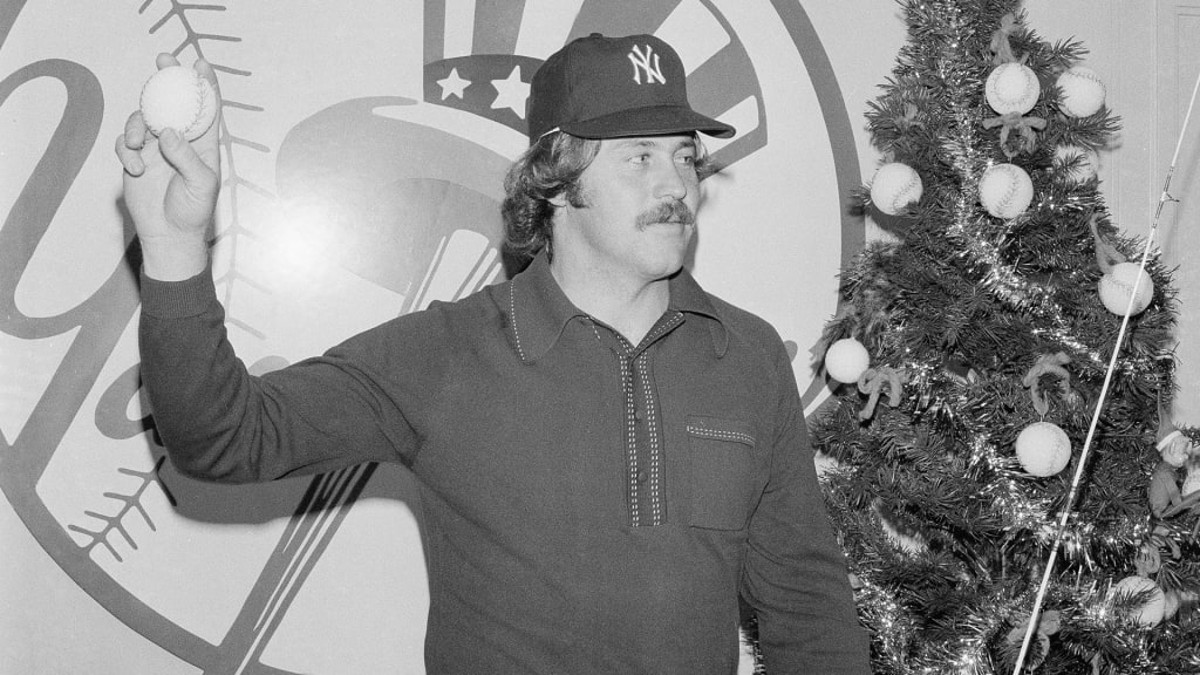
In the end, Catfish Hunter reached an agreement to join the New York Yankees, and a press conference was convened on New Year’s Eve in 1974 to make the deal public. This groundbreaking deal stipulated that Hunter would receive $3.2 million over a span of five years, marking him as the first free agent in the game to secure a substantial contract on the open market.
Catfish Hunter embarked on his Yankees career with a debut on April 11, 1975, facing the Detroit Tigers and encountering a loss while conceding five earned runs over nine innings. He subsequently endured two more defeats before clinching his first victory with the Milwaukee Brewers on April 27. As the season progressed, Catfish Hunter acclimated to his new environment. By season’s close, he had amassed an impressive 23 wins and boasted a 2.58 ERA across 328 innings pitched. His remarkable performance earned him a seventh All-Star selection, and he finished as the runner-up to Baltimore’s Jim Palmer in the Cy Young Award voting.
In 1976, the Yankees returned to the postseason following an 11-year hiatus. Catfish Hunter secured 17 victories during the regular season and secured a crucial win over the Kansas City Royals in Game One of the ALCS, delivering a complete game while permitting just a single earned run. However, the Yankees were subsequently swept by Cincinnati’s formidable Big Red Machine in the World Series. Catfish Hunter absorbed the loss in Game Two, yielding ten hits and uncharacteristically walking four batters. Throughout the regular season, he delivered 298⅔ innings, a feat he would not come close to replicating in the remaining three years of his contract.
The New York Yankees secured back-to-back World Series championships in both 1977 and 1978. During these two seasons, Catfish Hunter’s appearances were limited to just 43 games, resulting in an overall record of 21-15. He grappled with arm fatigue and received a diabetes diagnosis in February 1978. In his sole postseason start in 1977, he faced a challenging outing, giving up three home runs in just 2⅓ innings during Game Two of the World Series. In 1978, Catfish Hunter recorded a commendable 12-6 record, shining in the heat of the pennant race in August with six victories and an impressive 1.64 ERA for the month. In his final postseason performance of his career, he secured a crucial win against the Los Angeles Dodgers in Game Six of the World Series, enabling the Yankees to claim their second consecutive title.
The retirement
Before the 1979 season, Catfish Hunter made it clear that it would be his final season in a major-league uniform. He was compelled to retire due to diabetes. In an interview published in The Sporting News in October 1979, he shared, “When I signed my contract with the Yankees, I told them I would play these five years and call it a career no matter what happened. Fifteen years is enough.” His primary motive for retiring was to dedicate more time to his family and to enjoy the great outdoors, engaging in hunting and fishing.
The year 1979 proved to be a profoundly challenging one for Catfish Hunter on both personal and professional fronts, and it would ultimately mark his last season in the major leagues. On July 26, Hunter received the devastating news from manager Billy Martin that his father, Abbott, had succumbed to a lengthy battle with cancer. Then, on August 2, Thurman Munson, the Yankee catcher and Hunter’s closest friend on the team, tragically lost his life in a plane crash at an airport where he was practicing landing.
George Steinbrenner declared Sunday, September 16, 1979, as Catfish Hunter Day at Yankee Stadium. Teammates and fans gathered to celebrate his remarkable career achievements. In his address to the crowd, Hunter expressed his wish that his father, Abbott, his friend Clyde Kluttz, and his teammate Thurman Munson could have been there to join in the celebration. He left the game at the young age of 33.
Last days
Catfish Hunter was the owner of a sprawling 1,000-acre farm where he cultivated crops like corn, soybeans, and peanuts on a portion of the land. He leased the remaining acreage to fellow growers. His love for the outdoors endured, as he maintained a kennel filled with hunting dogs and continued his passion for outdoor activities throughout his life.
In 1987, Catfish Hunter earned a well-deserved place in the Baseball Hall of Fame. His impressive career included 224 victories, five consecutive seasons with 20 or more wins, and the acquisition of five World Series championship rings. During his induction speech, he expressed gratitude to Charlie Finley and George Steinbrenner for affording him the opportunity to play professional baseball. Catfish Hunter also paid tribute to Clyde Kluttz for the invaluable guidance provided throughout his career and considered his induction into the Hall of Fame as “the greatest honor that any guy could ever receive.”
Catfish Hunter embraced a peaceful life on his farm with his family. In September 1998, as he encountered difficulty in lifting his arms to operate his hunting rifle, he sought medical attention at a hospital in Baltimore. The diagnosis he received was amyotrophic lateral sclerosis (ALS), commonly known as Lou Gehrig’s disease. His final public appearance occurred in Tampa, Florida, at the Yankees’ inaugural spring training game in March 1999. On September 9, 1999, Catfish Hunter passed away at the age of 53 in his Hertford home. He was laid to rest in Cedar Wood Cemetery in Hertford, just behind the very field where he had shone as a high-school pitcher.
The legacy of Catfish Hunter
Catfish Hunter was honored with an induction into the Baseball Hall of Fame in Cooperstown in 1987. Traditionally, the decision about which team’s logo to display on a player’s Hall of Fame Plaque was left to the player’s preference. He, both before and after his induction, expressed his deep regard for the Oakland Athletics and the New York Yankees. Catfish Hunter held an appreciation for the team owners, Charlie Finley and George Steinbrenner. In line with his sentiment for both teams, he made the remarkable choice not to select a specific team’s logo, resulting in his plaque depicting him with a blank cap. George Steinbrenner credited Hunter as the cornerstone of the Yankees’ resurgence and their return to championship form.
In 1990, Catfish Hunter was inducted into the Bay Area Sports Hall of Fame. To commemorate his contribution to the sport, the Oakland Athletics established the Catfish Hunter Award in 2004. The Oakland Athletics celebrated Catfish Hunter’s legacy by retiring his number 27 during a pre-game ceremony on June 9, 1991, marking the first number retirement in the franchise’s history, which had spanned 90 years.
Hertford, Catfish Hunter’s hometown, is home to the Jim “Catfish” Hunter Memorial. An annual softball event is held in Hertford in memory of Hunter, with all proceeds from the weekend benefiting ALS research. Since its inception in 1999, the tournament has raised over $200,000.
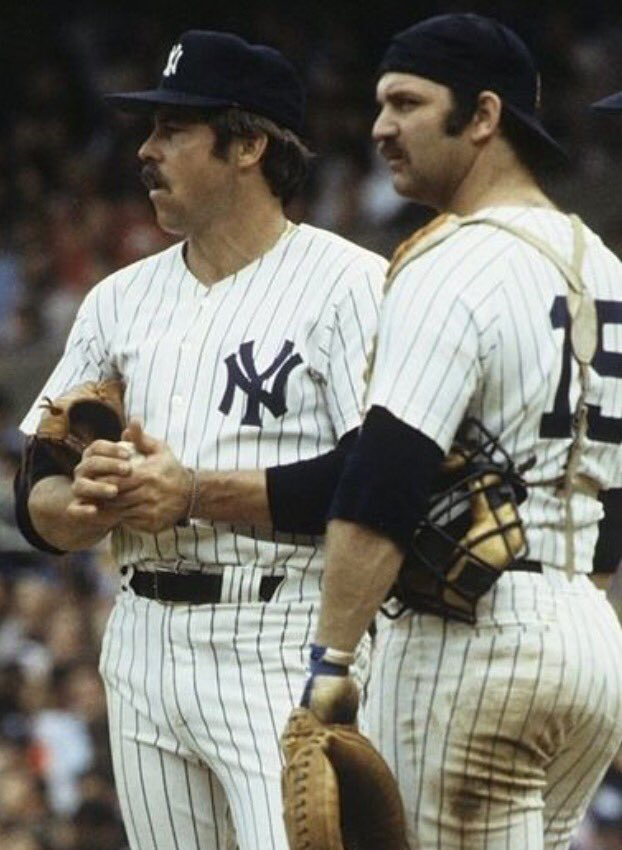
On September 5, 2018, Catfish Hunter was posthumously inducted into the Oakland Athletics’ inaugural Hall of Fame class, and his wife, Helen, was there to receive the honor. His impact extended beyond the baseball diamond and into popular culture. The renowned musician Bob Dylan composed the song “Catfish” in 1975, which was later released by Dylan, Joe Cocker, and Kinky Friedman. In 1976, the Bobby Hollowell song “The Catfish Kid (Ballad of Jim Hunter)” was dedicated to him and performed by Big Tom White. Hollowell, who was a close childhood friend of Catfish Hunter, co-wrote the song as a tribute to their shared upbringing.
Jason Kosow, a minor-league pitcher, portrayed Jim “Catfish” Hunter in the ESPN miniseries “The Bronx is Burning,” a show that depicted the 1977 New York Yankees.
Catfish Hunter’s illustrious career came to an end at the young age of 33, yet he managed to achieve remarkable success, amassing 224 victories and securing five World Series championships during his journey.
During his initial three seasons with the A’s in Kansas City, the right-handed pitcher experienced early triumphs in Oakland after the Athletics’ relocation to California. Catfish Hunter made history with a perfect game on May 8, 1968, which marked the ninth perfect game in Major League Baseball history and the first in the American League regular season since 1922.
Catfish Hunter earned his famous nickname, bestowed upon him by team owner Charlie Finley, during his time with the A’s. Additionally, he recorded four consecutive seasons with 20 or more wins, while maintaining a perfect 4-0 record in World Series appearances. In his final season with the A’s in 1974, Catfish Hunter’s remarkable performance led to numerous accolades. He was named the American League Pitcher of the Year by the Sporting News and received the AL Cy Young Award for his exceptional 25-12 record and a league-leading 2.49 earned-run average.
In the 1975 season, Catfish Hunter continued to dominate, leading the league in wins for the second consecutive year, securing 23 victories while donning the iconic pinstripes of the Bronx Bombers. Additionally, he led the league in innings pitched, accumulating an astonishing 328 innings, and managed an impressive 30 complete games.
Catfish Hunter’s tenure with the Yankees was marked by unprecedented success, as the team secured three consecutive pennants from 1976 to 1978, ultimately clinching World Series titles in the latter two years. Hunter’s achievements placed him alongside baseball legends Cy Young, Christy Mathewson, and Walter Johnson, as one of the only pitchers in MLB history to reach 200 wins by the age of 31.
Greatest Moments
- 8-time AL All-Star (1966, 1967, 1970 & 1972-1976)
- AL Cy Young Award Winner (1974)
- AL ERA Leader (1974)
- 2-time AL Wins Leader (1974 & 1975)
- AL Innings Pitched Leader (1975)
- AL Complete Games Leader (1975)
- 15 Wins Seasons: 7 (1970-1976)
- 20 Wins Seasons: 5 (1971-1975)
- 25 Wins Seasons: 1 (1974)
- 200 Innings Pitched Seasons: 10 (1967-1976)
- 300 innings Pitched Seasons: 2 (1974 & 1975)
- Won five World Series with the Oakland Athletics (1972, 1973 & 1974) and the New York Yankees (1977 & 1978)
- Baseball Hall of Fame: Class of 1987
Who is Catfish Hunter
James Augustus Hunter, nicknamed “Catfish”, was a professional baseball player in Major League Baseball.
When did Catfish Hunter play?
From 1965 to 1979
What number did Catfish Hunter wear with the Yankees?
No. 29
Where is Catfish Hunter from?
Hertford, North Carolina, United States
How did Catfish Jim Hunter die?
Lou Gehrig’s disease
What position did Catfish Hunter play?
Pitcher
What pitches did Catfish Hunter throw?
Fastball and Slider
When did Catfish Hunter become a free agent?
December 15, 1974
“Catfish Hunter” “when you take a bite”
Jackson’s teammate, Catfish Hunter, famously remarked that when you take a bite out of one, it tells you how good it is.
What hat is Catfish Hunter wearing on his HoF plaque?
The absence of any logo on Catfish Hunter’s plaque hat is straightforward to comprehend. He dedicated a decade to the Athletics before concluding his illustrious career with the Yankees. However, the cap worn by Yogi Berra on his Hall of Fame plaque, devoid of any logo, remains a puzzling enigma.
Who were the pitchers for the Oakland a’s when Catfish Hunter and vida blue were there?
Ken Holtzman and Blue Moon Odom
What number was Catfish Hunter for the Yankees?
#29
How much does the Catfish Hunter pay als patients?
$25,000 payments for annuities
When did Catfish Hunter marry Helen?
October 9, 1966
What team is Catfish Hunter on Hall Of Fame?
The Yankees
Why was Jim Hunter called Catfish?
Catfish Hunter was nicknamed “Catfish” by Oakland Athletics (A’s) owner Charlie Finley, ostensibly because of the pitcher’s love for fishing.
What did Catfish Hunter sign for with the Yankees?
Hunter alleged that Finley had violated their contract by neglecting to deposit $50,000, equivalent to half of Hunter’s salary, into a long-term annuity fund.
In this matter, Peter Seitz served as the arbitrator, and he ultimately determined that Hunter’s contract had indeed been breached, marking Catfish Hunter as the inaugural high-profile veteran free agent in the modern era. A few weeks later, Hunter inked a groundbreaking multi-million dollar contract with the New York Yankees, valued at $3.25 million over a five-year period. This deal encompassed a $1 million signing bonus, an annual salary of $150,000, and deferred compensation.
What year did Catfish Hunter sign with the Yankees?
Dec. 31, 1974
How many world series did Catfish Hunter win?
Five
What team did Catfish Hunter play for?
Yankees, Oakland Athletics
How tall was Catfish Hunter?
1.83 m
What position did Catfish Hunter play in high school when not pitching?
Hunter played linebacker and offensive tackle in football as well as shortstop, cleanup batter, and pitcher in baseball.
Who was the arbiter that set up free agency for Catfish Hunter?
Peter Seitz
What year did Catfish Hunter die?
September 9, 1999
How old was Catfish Hunter when the Yankees signed him?
28 years
Why is Catfish Hunter in the Hall Of Fame?
Hunter’s contributions extended far beyond his pitching prowess; his leadership abilities were equally invaluable. Over the course of his 15 major league seasons, he secured 224 wins and achieved first-ballot induction into the Baseball Hall of Fame at the age of 41.
The Stats
| SUMMARY | WAR | W | L | ERA | G | GS | SV | IP | SO | WHIP |
| Career | 40.9 | 224 | 166 | 3.26 | 500 | 476 | 1 | 3449.1 | 2012 | 1.134 |
Catfish Hunter’s Standard Pitching
| Year | W | L | W-L% | ERA | G | GS | GF | CG | SHO | SV | IP | H | R | ER | HR | BB | IBB | SO | HBP | BK | WP | BF | ERA+ | FIP | WHIP | H9 | HR9 | BB9 | SO9 | SO/W |
| 1965 | 8 | 8 | 0.5 | 4.26 | 32 | 20 | 2 | 3 | 2 | 0 | 133 | 124 | 68 | 63 | 21 | 46 | 5 | 82 | 2 | 1 | 2 | 567 | 82 | 4.42 | 1.278 | 8.4 | 1.4 | 3.1 | 5.5 | 1.78 |
| 1966 | 9 | 11 | 0.45 | 4.02 | 30 | 25 | 0 | 4 | 0 | 0 | 176.2 | 158 | 87 | 79 | 17 | 64 | 4 | 103 | 2 | 2 | 2 | 740 | 85 | 3.76 | 1.257 | 8 | 0.9 | 3.3 | 5.2 | 1.61 |
| 1967 | 13 | 17 | 0.433 | 2.81 | 35 | 35 | 0 | 13 | 5 | 0 | 259.2 | 209 | 91 | 81 | 16 | 84 | 6 | 196 | 2 | 1 | 4 | 1053 | 114 | 2.82 | 1.128 | 7.2 | 0.6 | 2.9 | 6.8 | 2.33 |
| 1968 | 13 | 13 | 0.5 | 3.35 | 36 | 34 | 2 | 11 | 2 | 1 | 234 | 210 | 99 | 87 | 29 | 69 | 10 | 172 | 4 | 1 | 0 | 968 | 83 | 3.46 | 1.192 | 8.1 | 1.1 | 2.7 | 6.6 | 2.49 |
| 1969 | 12 | 15 | 0.444 | 3.35 | 38 | 35 | 0 | 10 | 3 | 0 | 247 | 210 | 99 | 92 | 34 | 85 | 1 | 150 | 5 | 0 | 8 | 1002 | 102 | 4.18 | 1.194 | 7.7 | 1.2 | 3.1 | 5.5 | 1.76 |
| 1970 | 18 | 14 | 0.563 | 3.81 | 40 | 40 | 0 | 9 | 1 | 0 | 262.1 | 253 | 124 | 111 | 32 | 74 | 3 | 178 | 9 | 1 | 6 | 1116 | 93 | 3.82 | 1.247 | 8.7 | 1.1 | 2.5 | 6.1 | 2.41 |
| 1971 | 21 | 11 | 0.656 | 2.96 | 37 | 37 | 0 | 16 | 4 | 0 | 273.2 | 225 | 103 | 90 | 27 | 80 | 7 | 181 | 4 | 0 | 2 | 1109 | 113 | 3.33 | 1.114 | 7.4 | 0.9 | 2.6 | 6 | 2.26 |
| 1972 | 21 | 7 | 0.75 | 2.04 | 38 | 37 | 1 | 16 | 5 | 0 | 295.1 | 200 | 74 | 67 | 21 | 70 | 6 | 191 | 3 | 0 | 3 | 1148 | 140 | 2.77 | 0.914 | 6.1 | 0.6 | 2.1 | 5.8 | 2.73 |
| 1973 | 21 | 5 | 0.808 | 3.34 | 36 | 36 | 0 | 11 | 3 | 0 | 256.1 | 222 | 105 | 95 | 39 | 69 | 1 | 124 | 1 | 0 | 2 | 1040 | 107 | 4.4 | 1.135 | 7.8 | 1.4 | 2.4 | 4.4 | 1.8 |
| 1974 | 25 | 12 | 0.676 | 2.49 | 41 | 41 | 0 | 23 | 6 | 0 | 318.1 | 268 | 97 | 88 | 25 | 46 | 2 | 143 | 4 | 0 | 1 | 1240 | 134 | 3.17 | 0.986 | 7.6 | 0.7 | 1.3 | 4 | 3.11 |
| 1975 | 23 | 14 | 0.622 | 2.58 | 39 | 39 | 0 | 30 | 7 | 0 | 328 | 248 | 107 | 94 | 25 | 83 | 4 | 177 | 5 | 0 | 7 | 1294 | 144 | 3.3 | 1.009 | 6.8 | 0.7 | 2.3 | 4.9 | 2.13 |
| 1976 | 17 | 15 | 0.531 | 3.53 | 36 | 36 | 0 | 21 | 2 | 0 | 298.2 | 268 | 126 | 117 | 28 | 68 | 5 | 173 | 3 | 0 | 6 | 1210 | 98 | 3.41 | 1.125 | 8.1 | 0.8 | 2 | 5.2 | 2.54 |
| 1977 | 9 | 9 | 0.5 | 4.71 | 22 | 22 | 0 | 8 | 1 | 0 | 143.1 | 137 | 83 | 75 | 29 | 47 | 3 | 52 | 3 | 1 | 2 | 608 | 84 | 5.69 | 1.284 | 8.6 | 1.8 | 3 | 3.3 | 1.11 |
| 1978 | 12 | 6 | 0.667 | 3.58 | 21 | 20 | 1 | 5 | 1 | 0 | 118 | 98 | 49 | 47 | 16 | 35 | 0 | 56 | 1 | 0 | 2 | 477 | 102 | 4.31 | 1.127 | 7.5 | 1.2 | 2.7 | 4.3 | 1.6 |
| 1979 | 2 | 9 | 0.182 | 5.31 | 19 | 19 | 0 | 1 | 0 | 0 | 105 | 128 | 68 | 62 | 15 | 34 | 0 | 34 | 1 | 0 | 2 | 460 | 77 | 4.94 | 1.543 | 11 | 1.3 | 2.9 | 2.9 | 1 |
| 15 Yrs | 224 | 166 | 0.574 | 3.26 | 500 | 476 | 6 | 181 | 42 | 1 | 3449.1 | 2958 | 1380 | 1248 | 374 | 954 | 57 | 2012 | 49 | 7 | 49 | 14032 | 104 | 3.66 | 1.134 | 7.7 | 1 | 2.5 | 5.2 | 2.11 |
| 162 Game Avg. | 16 | 12 | 0.574 | 3.26 | 35 | 33 | 0 | 13 | 3 | 0 | 240 | 206 | 96 | 87 | 26 | 66 | 4 | 140 | 3 | 0 | 3 | 978 | 104 | 3.66 | 1.134 | 7.7 | 1 | 2.5 | 5.2 | 2.11 |
| OAK (10 yrs) | 161 | 113 | 0.588 | 3.13 | 363 | 340 | 5 | 116 | 31 | 1 | 2456.1 | 2079 | 947 | 853 | 261 | 687 | 45 | 1520 | 36 | 6 | 30 | 9983 | 105 | 3.54 | 1.126 | 7.6 | 1 | 2.5 | 5.6 | 2.21 |
| NYY (5 yrs) | 63 | 53 | 0.543 | 3.58 | 137 | 136 | 1 | 65 | 11 | 0 | 993 | 879 | 433 | 395 | 113 | 267 | 12 | 492 | 13 | 1 | 19 | 4049 | 103 | 3.97 | 1.154 | 8 | 1 | 2.4 | 4.5 | 1.84 |
Catfish Hunter’s Postseason Pitching
| Year | W | L | W-L% | ERA | G | GS | GF | CG | SHO | SV | IP | H | R | ER | HR | BB | IBB | SO | HBP | BK | WP | BF | WHIP | H9 | HR9 | BB9 | SO9 | SO/W | WPA | cWPA |
| 1971 | 0 | 1 | 0 | 5.63 | 1 | 1 | 0 | 1 | 0 | 0 | 8 | 7 | 5 | 5 | 4 | 2 | 0 | 6 | 0 | 0 | 0 | 32 | 1.125 | 7.9 | 4.5 | 2.3 | 6.8 | 3 | -0.1 | -1.90% |
| 1972 | 0 | 0 | 1.17 | 2 | 2 | 0 | 0 | 0 | 0 | 15.1 | 10 | 2 | 2 | 2 | 5 | 1 | 9 | 0 | 0 | 0 | 60 | 0.978 | 5.9 | 1.2 | 2.9 | 5.3 | 1.8 | 0.18 | 2.80% | |
| 1972 | 2 | 0 | 1 | 2.81 | 3 | 2 | 0 | 0 | 0 | 0 | 16 | 12 | 5 | 5 | 2 | 6 | 2 | 11 | 0 | 0 | 1 | 67 | 1.125 | 6.8 | 1.1 | 3.4 | 6.2 | 1.83 | 0.39 | 20.60% |
| 1973 | 2 | 0 | 1 | 1.65 | 2 | 2 | 0 | 1 | 1 | 0 | 16.1 | 12 | 3 | 3 | 0 | 5 | 1 | 6 | 1 | 0 | 0 | 66 | 1.041 | 6.6 | 0 | 2.8 | 3.3 | 1.2 | 0.56 | 21.50% |
| 1973 | 1 | 0 | 1 | 2.03 | 2 | 2 | 0 | 0 | 0 | 0 | 13.1 | 11 | 3 | 3 | 1 | 4 | 1 | 6 | 0 | 0 | 1 | 56 | 1.125 | 7.4 | 0.7 | 2.7 | 4.1 | 1.5 | 0.38 | 18.80% |
| 1974 | 1 | 1 | 0.5 | 4.63 | 2 | 2 | 0 | 0 | 0 | 0 | 11.2 | 11 | 6 | 6 | 3 | 2 | 0 | 6 | 0 | 0 | 0 | 45 | 1.114 | 8.5 | 2.3 | 1.5 | 4.6 | 3 | -0.01 | 2.10% |
| 1974 | 1 | 0 | 1 | 1.17 | 2 | 1 | 1 | 0 | 0 | 1 | 7.2 | 5 | 1 | 1 | 1 | 2 | 0 | 5 | 0 | 0 | 0 | 30 | 0.913 | 5.9 | 1.2 | 2.3 | 5.9 | 2.5 | 0.38 | 13.10% |
| 1976 | 1 | 1 | 0.5 | 4.5 | 2 | 2 | 0 | 1 | 0 | 0 | 12 | 10 | 6 | 6 | 0 | 1 | 0 | 5 | 0 | 0 | 0 | 45 | 0.917 | 7.5 | 0 | 0.8 | 3.8 | 5 | 0.07 | -0.50% |
| 1976 | 0 | 1 | 0 | 3.12 | 1 | 1 | 0 | 1 | 0 | 0 | 8.2 | 10 | 4 | 3 | 0 | 4 | 1 | 5 | 0 | 0 | 0 | 40 | 1.615 | 10.4 | 0 | 4.2 | 5.2 | 1.25 | -0.3 | -8.80% |
| 1977 | Did not pitch in series | |||||||||||||||||||||||||||||
| 1977 | 0 | 1 | 0 | 10.38 | 2 | 1 | 1 | 0 | 0 | 0 | 4.1 | 6 | 5 | 5 | 3 | 0 | 0 | 1 | 0 | 0 | 0 | 19 | 1.385 | 12.5 | 6.2 | 0 | 2.1 | -0.31 | -10.50% | |
| 1978 | 0 | 0 | 4.5 | 1 | 1 | 0 | 0 | 0 | 0 | 6 | 7 | 3 | 3 | 3 | 3 | 0 | 5 | 0 | 0 | 0 | 26 | 1.667 | 10.5 | 4.5 | 4.5 | 7.5 | 1.67 | -0.06 | -1.60% | |
| 1978 | 1 | 1 | 0.5 | 4.15 | 2 | 2 | 0 | 0 | 0 | 0 | 13 | 13 | 6 | 6 | 2 | 1 | 0 | 5 | 0 | 0 | 0 | 50 | 1.077 | 9 | 1.4 | 0.7 | 3.5 | 5 | -0.2 | -2.80% |
| 7 Yrs (12 Series) | 9 | 6 | 0.6 | 3.26 | 22 | 19 | 2 | 4 | 1 | 1 | 132.1 | 114 | 49 | 48 | 21 | 35 | 6 | 70 | 1 | 0 | 2 | 536 | 1.126 | 7.8 | 1.4 | 2.4 | 4.8 | 2 | 0.98 | 52.80% |
| 6 ALCS | 4 | 3 | 0.571 | 3.25 | 10 | 10 | 0 | 3 | 1 | 0 | 69.1 | 57 | 25 | 25 | 12 | 18 | 2 | 37 | 1 | 0 | 0 | 274 | 1.082 | 7.4 | 1.6 | 2.3 | 4.8 | 2.06 | 0.64 | 22.40% |
| 6 WS | 5 | 3 | 0.625 | 3.29 | 12 | 9 | 2 | 1 | 0 | 1 | 63 | 57 | 24 | 23 | 9 | 17 | 4 | 33 | 0 | 0 | 2 | 262 | 1.175 | 8.1 | 1.3 | 2.4 | 4.7 | 1.94 | 0.34 | 30.40% |
Catfish Hunter’s Career Graph
| Hall of Fame | All-Star Games | Awards | MVP (rank, share) |
| 1985 BBWAA (53.7%) 1986 BBWAA (68.0%) 1987 BBWAA (76.3%) Selected to HOF in 1987 by BBWAA | 1966 1967 * 1970 * 1972 1973 (P) 1974 * 1975 * 1976 * | 1974 AL Cy Young 1974 AL Pitching Title 1974 AL TSN All-Star 1974 AL TSN Pitcher of the Year | 1971 AL (28, 0%) 1972 AL (11, 17%) 1973 AL (10, 14%) 1974 AL (6, 32%) 1975 AL (12, 9%) 0.72 Career Shares (367th) |
| Cy Young (rank, share) | Weekly Awards | Wins Above Replacement | WAR for Pitchers |
| 1972 AL (4, 22%) 1973 AL (3, 43%) 1974 AL (1, 75%) 1975 AL (2, 62%) 1 Cy Young 2.02 Career Shares (22nd) | 1975 Sep 7th AL Player of the Week 1978 Aug 6th AL Player of the Week | 1974 AL 6.9 (8th) 1975 AL 8.1 (3rd) | 1967 AL 4.6 (4th) 1972 AL 5.7 (6th) 1974 AL 6.9 (6th) 1975 AL 8.1 (3rd) Career 36.3 (212th) |
| Earned Run Average | Wins | Win-Loss % | Walks & Hits per IP |
| 1972 AL 2.04 (3rd) 1974 AL 2.49 (1st) 1975 AL 2.58 (2nd) | 1970 AL 18 (8th) 1971 AL 21 (4th) 1972 AL 21 (4th) 1973 AL 21 (4th) 1974 AL 25 (1st) 1975 AL 23 (1st) 1976 AL 17 (8th) Career 224 (72nd) | 1971 AL .656 (8th) 1972 AL .750 (1st) 1973 AL .808 (1st) 1974 AL .676 (3rd) 1978 AL .667 (9th) Career .574 (240th) | 1971 AL 1.114 (7th) 1972 AL 0.914 (2nd) 1973 AL 1.135 (3rd) 1974 AL 0.986 (1st) 1975 AL 1.009 (1st) 1976 AL 1.125 (6th) Career 1.134 (55th) |
| Hits per 9 IP | Bases On Balls per 9 IP | Strikeouts per 9 IP | Innings Pitched |
| 1967 AL 7.244 (7th) 1971 AL 7.400 (9th) 1972 AL 6.095 (2nd) 1973 AL 7.795 (6th) 1974 AL 7.577 (5th) 1975 AL 6.805 (1st) Career 7.718 (64th) | 1970 AL 2.539 (9th) 1972 AL 2.133 (8th) 1973 AL 2.423 (8th) 1974 AL 1.301 (2nd) 1975 AL 2.277 (5th) 1976 AL 2.049 (8th) | 1976 AL 5.213 (8th) | 1967 AL 259.7 (6th) 1970 AL 262.3 (10th) 1972 AL 295.3 (4th) 1974 AL 318.3 (5th) 1975 AL 328.0 (1st) 1976 AL 298.7 (2nd) Career 3,449.3 (78th) |
| Strikeouts | Games Started | Complete Games | Shutouts |
| 1967 AL 196 (8th) 1968 AL 172 (10th) 1970 AL 178 (9th) 1971 AL 181 (10th) 1972 AL 191 (8th) 1975 AL 177 (7th) 1976 AL 173 (5th) Career 2,012 (86th) | 1968 AL 34 (10th) 1970 AL 40 (1st) 1972 AL 37 (9th) 1974 AL 41 (2nd) 1975 AL 39 (3rd) 1976 AL 36 (7th) Career 476 (67th) | 1967 AL 13 (4th) 1968 AL 11 (9th) 1971 AL 16 (9th) 1972 AL 16 (7th) 1974 AL 23 (6th) 1975 AL 30 (1st) 1976 AL 21 (4th) Career 181 (169th) | 1967 AL 5 (6th) 1969 AL 3 (10th) 1971 AL 4 (7th) 1972 AL 5 (7th) 1974 AL 6 (2nd) 1975 AL 7 (2nd) Career 42 (38th) |
| Home Runs | Hits | Strikeouts / Base On Balls | Home Runs per 9 IP |
| 1968 AL 29 (2nd) 1969 AL 34 (2nd) 1970 AL 32 (3rd) 1971 AL 27 (7th) 1972 AL 21 (9th) 1973 AL 39 (1st) 1974 AL 25 (8th) 1975 AL 25 (8th) 1976 AL 28 (1st) 1977 AL 29 (5th) Career 374 (21st) | 1967 AL 209 (6th) 1968 AL 210 (6th) 1970 AL 253 (7th) 1976 AL 268 (4th) Career 2,958 (136th) | 1970 AL 2.405 (6th) 1972 AL 2.729 (6th) 1974 AL 3.109 (3rd) 1975 AL 2.133 (7th) 1976 AL 2.544 (8th) | 1967 AL 0.555 (7th) |
| Losses | Earned Runs | Hit By Pitch | Batters Faced |
| 1967 AL 17 (3rd) 1969 AL 15 (8th) 1970 AL 14 (10th) 1976 AL 15 (8th) Career 166 (101st) | 1968 AL 87 (1st) 1970 AL 111 (4th) 1976 AL 117 (1st) Career 1,248 (105th) | 1970 AL 9 (3rd) | 1967 AL 1,053 (7th) 1970 AL 1,116 (9th) 1972 AL 1,148 (6th) 1974 AL 1,240 (8th) 1975 AL 1,294 (1st) 1976 AL 1,210 (4th) Career 14,032 (90th) |
| Adjusted ERA+ | Fielding Independent Pitching | Adj. Pitching Runs | Adj. Pitching Wins |
| 1972 AL 140 (5th) 1974 AL 134 (4th) 1975 AL 144 (3rd) | 1967 AL 2.82 (8th) 1974 AL 3.17 (8th) 1975 AL 3.30 (9th) | 1972 AL 30 (3rd) 1974 AL 34 (3rd) 1975 AL 42 (2nd) | 1972 AL 3.6 (3rd) 1974 AL 3.8 (3rd) 1975 AL 4.6 (2nd) |
| Base-Out Runs Saved (RE24) | Win Probability Added (WPA) | Sit. Wins Saved (WPA/LI) | Championship WPA (cWPA) |
| 1972 AL 34.26 (3rd) 1974 AL 44.08 (2nd) 1975 AL 51.56 (2nd) Career 148.15 (133rd) | 1972 AL 3.8 (5th) 1974 AL 2.9 (8th) 1975 AL 4.5 (4th) Career 14.0 (193rd) | 1967 AL 2.0 (10th) 1972 AL 3.8 (2nd) 1974 AL 4.7 (1st) 1975 AL 5.6 (2nd) Career 14.6 (135th) | 1972 AL 5.2 (5th) 1974 AL 3.2 (9th) 1975 AL 2.1 (7th) |
| Base-Out Wins Saved (REW) | Putouts as P | Errors Committed as P | Fielding % as P |
| 1972 AL 4.4 (3rd) 1974 AL 5.2 (2nd) 1975 AL 5.8 (2nd) Career 17.7 (108th) | 1972 AL 23 (2nd) 1974 AL 25 (2nd) 1975 AL 23 (4th) 1976 AL 24 (3rd) Career 225 (70th) | 1968 AL 4 (2nd) | 1969 AL 1.000 (1st) 1971 AL 1.000 (1st) |
| Youngest | |||
| 1965 AL born 1946-04-08 (9th) 1966 AL born 1946-04-08 (5th) |
- Categories: catfish hunter
- Tags: catfish hunter
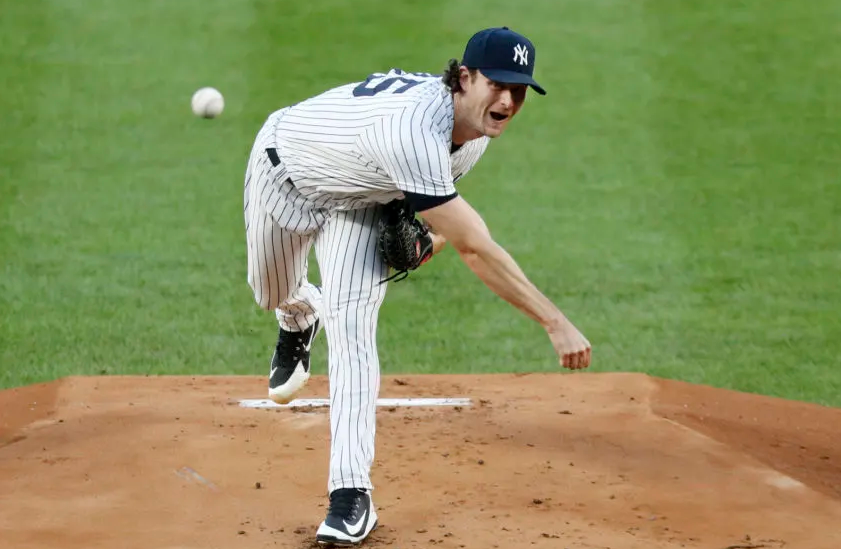
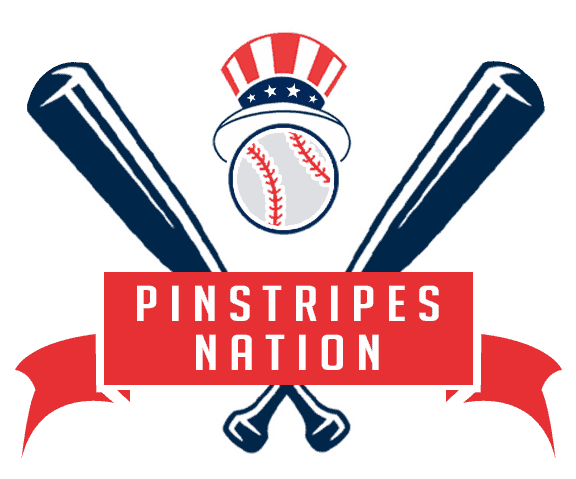
 Follow Us
Follow Us






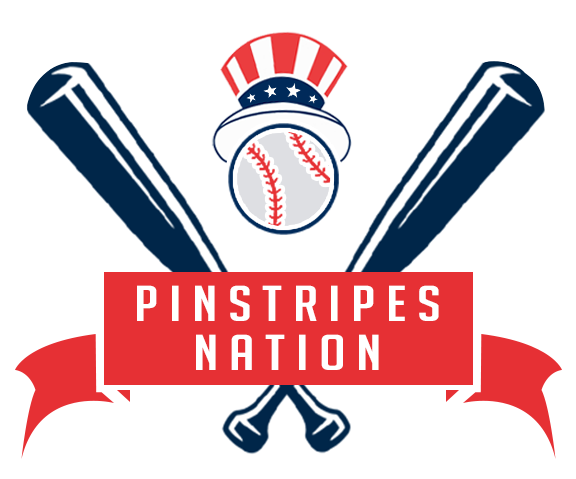
2 thoughts on “Catfish Hunter: Yankees’ foremost, MLB’s first big-money star”
My first symptoms of ALS occurred in 2014, but were diagnosed in 2016. I had severe symptoms ranging from shortness of breath, balance problems, couldn’t walk without a walker or a power chair, i had difficulty swallowing and fatigue. I was given medications which helped but only for a short burst of time, then I decided to try alternative measures and began on ALS Formula treatment from Tree of Life Health clinic. It has made a tremendous difference for me (Visit w w w. healthcareherbalcentre .com I had improved walking balance, increased appetite, muscle strength, improved eyesight and others. ]
My first symptoms of ALS occurred in 2014, but were diagnosed in 2016. I had severe symptoms ranging from shortness of breath, balance problems, couldn’t walk without a walker or a power chair, i had difficulty swallowing and fatigue. I was given medications which helped but only for a short burst of time, then I decided to try alternative measures and began on ALS Formula treatment from Tree of Life Health clinic. It has made a tremendous difference for me (Visit w w w. healthcareherbalcentre .com I had improved walking balance, increased appetite, muscle strength, improved eyesight and others. ]